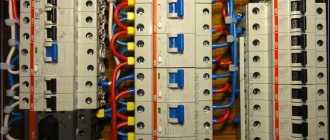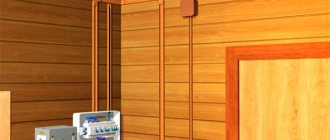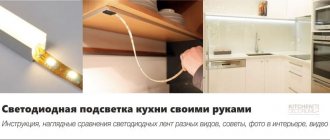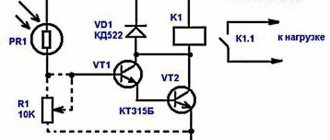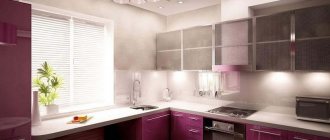Daylight
Ideally, the dressing room should contain at least one window for natural light. It will be great if the window is located in the center of the wall. Even without electrical appliances turned on, you can find the smallest and darkest things.
A chandelier placed in the center of the ceiling creates glamorous and elegant lighting. Above the chair on which you dress/undress, you can hang a dark glass lighting fixture, making the room richer and more sophisticated. You can also supplement the natural light from window openings with table lamps.
Take into account! To imitate the sun's rays, use white lamps. Classic and austere furnishings can be diluted with crystal chandeliers.
If there are windows
If there is a window in the dressing room, there will be fewer problems with fresh ventilation. If the windows are not airtight, natural inflow is usually sufficient. But, if there are plastic windows, access to fresh air can only be ensured through ventilation. In this case, it is ideal if there is a micro-ventilation function. By providing a small air flow for some time, you can maintain a normal atmosphere.
With the micro-ventilation function there are no problems with the flow of fresh air
If plastic windows have only standard modes, just below the window sill, on the side of the window or in any other place on the wall, you can build in valves for air flow from the street. These valves are usually adjustable and can allow air to flow at different rates.
Air supply valves
Depending on the manufacturer, the inside may be round (as in the picture on the left) or rectangular (in the picture on the right). Their structure is approximately the same. - filter, insulation, external and internal grilles. A very convenient thing not only for fresh ventilation of the dressing room, but also for all other rooms whose walls face the street.
Lighting places in the wardrobe
Start equipping your dressing room by dividing the space into specific zones. It will be difficult to get confused, since in the case of this premises they are guided by strict norms and requirements.
Here are the main sectors of the dressing room that must be highlighted:
- section for outerwear with a height of at least 150 cm;
- for short clothes - with a height of up to 100 cm;
- shoe storage area - at the bottom of the dressing room;
- fitting room - must be equipped with a mirror and is intended for choosing clothes.
Large dressing rooms can be supplemented with an ironing board and divided into zones for women, men and children (if the room is created for the whole family). If the last rule applies, then it is imperative to divide the fitting areas into the same number of parts.
Small rooms will look the same as mentioned above - you won’t be able to walk around in them. For more compact and convenient storage of things, use a built-in modular closet and retractable hangers.
The more space allocated for a dressing room, the more functional it will be. The comfort of your stay also increases.
Ceiling lighting
The most common place to place lighting fixtures in a dressing room is the ceiling. It is this that allows you to organize an even distribution of light along the entire perimeter of the room, so that you can easily find things in different corners of the closet.
In a small space, it is advisable to use spotlights and LED strips located along the perimeter of the ceiling. If the dressing room is large and the ceilings are high, then you can hang a beautiful volumetric chandelier to emphasize the classic style. In corner rooms, lighting fixtures on clothespins are used, with a variable angle of inclination.
Cabinet shelf lighting
Additional lighting will make the dressing room even more convenient and comfortable. In addition to ceiling lighting fixtures, spotlights located in the walls of modular cabinets and shelving are used. Often, multi-colored lamps are chosen to divide the room into storage areas for shoes, evening dresses, men's suits, and casual clothes (each category has its own color). Due to this division, you make it easier to find the things you need without turning on common lighting fixtures.
LED lamps are preferred due to their low heating temperature, which does not damage furniture coverings during operation - this is the best light source for a dressing room! Add to this the low energy consumption and compact size of individual lamps, which allows you to install several pieces on one shelf at once, or place them around the entire perimeter of the cabinet.
Mirror lighting
The space in the dressing room where the mirrors are installed is illuminated with separate lamps. In this place, people spend more time trying on clothes and getting ready. Brighter incandescent lamps, at least 100 W, are suitable here (housekeepers are similar in brightness).
Important! The light from such sources should be diffused so as not to put much strain on the visual apparatus.
Why is ventilation needed and its types?
In areas where clothes and shoes are stored, it is imperative to organize good air exchange. Skin particles remain on things and shoes, skin secretions remain, and dust accumulates. All this is an excellent environment for the development of microorganisms. Therefore, good ventilation in the dressing room is a prerequisite for maintaining the normal state of things and the absence of a musty smell.
In dressing rooms, as in any other rooms, ventilation can be natural or forced. Natural ventilation works through physical processes - cold air enters from below, heats up and rises to the top. Therefore, if you make a supply hole at the bottom and an exhaust hole at the top, air movement will be ensured at a certain speed.
The principle of organizing ventilation of a house or apartment. Wardrobe ventilation is part of this system
If there are ventilation ducts near the dressing room, it makes sense to make a branch to the exhaust vent. This will solve many problems.
But the natural ventilation of a dressing room cannot always provide a sufficient air exchange rate. To increase it, fans are installed. They can be installed in both supply and exhaust openings. Most often, a forced hood is installed, and air flows naturally through ventilation gaps or holes. This allows you to not spend too much money, but still ensure a normal atmosphere in the room.
Types of lighting fixtures
It is not always easy to understand which dressing room lighting fixtures are primary and which are secondary. LED strip as an addition to ceiling lamps (chandeliers, spotlights) can be much more effective, illuminating even remote corners of the room and allowing you to find the necessary items of clothing.
It is not always possible to achieve such an effect from a chandelier of an unusual shape. Track and spot light sources are another option for illuminating the entire space of a room.
Halogen lamps
Such lighting fixtures are in great demand due to the variety of types - they differ in design and functionality. Install a halogen spotlight on the canopy of a modular cabinet and direct its rays downward - the result will be amazing.
One such lamp can fill the entire interior space of furniture with light. Supplement the device with a motion sensor to get backlighting that turns on when the cabinet door is opened.
LED lightening
High-tech lamps based on LED diodes are becoming more and more popular every year in all spheres of human activity. The design of furniture and interior design is no exception. They are characterized by efficiency, durability, safety and high-quality lighting.
Fluorescent lighting devices
They are divided into two main types - compact energy-saving and linear (tubular) lamps. Among the advantages, we note low energy consumption. There are more disadvantages - they are not strong enough to withstand mechanical shocks, they are bulky, and outwardly very simple. If you use them, then place them horizontally above the fitting room mirror.
LED Strip Light
A flexible board consisting of many LEDs with exposed contacts is an excellent option for additional cabinet lighting. Can be placed both inside modular structures and along the perimeter of the ceiling/floor.
How to illuminate the floor
This lighting system should be placed in a separate category. It can be part of complex lighting, be local or have a decorative function. In the latter version, floor lighting is used when decorating the podium.
Downlights have several advantages:
- Doesn't irritate eyes. Especially while watching TV.
- The soft twilight pouring from under the floor relaxes and evokes an atmosphere of comfort and tranquility.
And yet, each lighting fixture is selected for the type of interior. When placing lamps, you need to take into account the purpose of the room and its color. Soft, yellow light will look out of place in a bright room.
Wardrobe lighting
One of the main elements of the dressing room is doors, made in two versions - hinged/sliding, with the latter option being the most preferable. Motion sensors have already been mentioned above. With their help, you can organize the automatic switching on of the interior lighting of a modular cabinet when the door is opened.
The interior of the wardrobe can be illuminated by spotlights installed in the ceiling and providing diffused light, or by wall-mounted fixtures with natural lighting. For drawers, use local lights.
Also for furniture, special mortise and surface-mounted lamps are produced, most suitable for lighting the inside of the cabinet. When choosing lamps, focus on ease of use and safety.
Preparation for installation
Technical requirements
When installing the lighting yourself, you must comply with the requirements to ensure comfortable and safe use of the equipment.
Lighting for a furniture cabinet must comply with the following standards:
- the degree of illumination for the hallway is not lower than 50 Lux, for the dressing room - not lower than 75 Lux, for the kitchen - not lower than 150 Lux;
- since there is a possibility of direct contact during operation of the backlight, a reduced voltage should be used to power it;
- wires must be connected to the lighting system in one of the following ways: crimping, soldering, terminal connection;
- if the backlight is powered from a standard network with a voltage of 220 V, the network must be protected by an RCD, which will ensure that the lighting is turned off if the insulation is broken;
- The lighting should not be too bright and comfortable enough for the eyes.
Lighting for dressing rooms
With all this, do not confuse the dressing room with a regular wardrobe. If the latter is used exclusively for storing clothes, then a person enters the dressing room undressed and leaves fully dressed, combed and prepared to leave the house. For this reason, bright lighting without eye strain is a priority when arranging such rooms.
For suspended ceilings, built-in lighting fixtures with a large dispersion angle are used, and for ordinary ceilings, chandeliers or standard ceiling lamps are used. Another option is models of devices with rotating shades, allowing you to set the desired direction of lighting.
The area with the mirror is illuminated using wall sconces and tubular lamps. Above the pipes, where the hangers are attached, oblong and thin lighting fixtures are attached.
Since a dressing room, especially a large one, requires a considerable number of lamps, it is advisable to use devices based on LEDs for these purposes - strips, lamps, standard lamps, etc. Their shape does not matter, the main thing here is low electrical energy consumption, durability and low glow temperature.
To increase savings, each group of lamps should be connected to a separate switch. If you want to achieve full automation, then use motion sensors with a long shutdown delay.
To ensure silence
If you install regular grilles on both opposite walls in the dressing room, noise will penetrate through them. Clothing and space will muffle them somewhat, but some sounds will be audible. If this prospect doesn’t scare you, great. But if you want silence, special bypass grilles or valves are installed in the holes.
Special valves for soundproofing ventilation openings
They almost do not obstruct the passage of air, but do not allow light or noise to pass through. These grilles are not cheap, but there is no other way to ensure that the ventilation of the dressing room is effective and does not allow sound to pass through.
Recommendations for dressing room lighting
Here are some tips for organizing lighting:
- choose the most economical lamps - the more spacious the room, the more benefits they will provide;
- try to create lighting that is close to natural - do not overdo it with brightness;
- do not use a chandelier in small dressing rooms - it will be useless and irrelevant;
- lighting is thought out at the room design stage, before installing modular cabinets, shelving and doors;
- Do not backlight the mirror for a small wardrobe (other lamps will be sufficient).
When organizing lighting for a dressing room, they are guided by almost the same rules as for the rest of the living rooms of a house or apartment. Properly designed room lighting will allow you to achieve ease of use and maximum comfort. Follow the recommendations above. Additional consultation with specialists will not be superfluous.
Is a fan needed?
As has already been said, the natural ventilation of the dressing room does not always provide sufficient air movement speed and a musty smell still appears. This usually happens in the summer, when it is too hot outside and natural air movement is minimal or the draft generally reverses (air masses move in the opposite direction). In such cases, fans are installed on the exhaust openings. Their power is selected depending on the volume, but as a rule, the lowest power ones are sufficient - 10-50 cubic meters per hour. In this case, the main selection criterion is quiet operation. After all, many dressing rooms open onto bedrooms or other living spaces.
Fans may vary. You can even use computer coolers
Many people find it intimidating to install fans—they have to run almost 24/7. In general, not necessarily. It is quite enough if it turns on for 15-20-30 minutes every hour. This mode is provided by timers, controllers and other similar devices. All that is required is to select the operating mode and set the appropriate settings.
Yes, this is an additional expense, but the forced ventilation of the dressing room works constantly and does not depend on the vagaries of the weather.
Illumination standards or how much light a person needs
Quite often a person feels psychologically a lack of sunlight, especially in regions where the lack of sun is significant due to natural conditions. Artificial lighting is designed to fill this gap to normal. The concept of a norm in this case is vague, but it has been scientifically proven that a person must be in light, even if artificial, for approximately 9-10 hours a day.
Calculations of the norm of natural lighting are measured in lux units, for example, in sunny weather the measurements are 100,000 Lux, and indoors, even near a window it will be a little more than 100 Lux, which immediately indicates insufficiency for plants and humans.
Types of lighting and its regulation depend on the type of premises. The calculation method, its sanitary standards range from 150-200Lx for common rooms, such as the kitchen, living room, bathroom.
For corridors, hallways, bedrooms or balconies the norm will be below 100Lx. But work areas in the kitchen, at the desk, and for reading should be additionally equipped with artificial light lamps.
It is believed that non-residential premises such as offices, gyms and manufacturing workshops maintain artificial lighting at a level of 200 to 300 lux to encourage people to be active.
Artificial lighting.
Conclusion
Thus, it is clear that improper lighting poses a significant threat to the health of workers. Proper organization of lighting in the workplace is the key to health, high labor productivity, and a comfortable emotional and psychological state of a person. Proper organization of lighting involves not only compliance with regulatory requirements for the level of illumination and a number of other indicators, but also taking into account a number of qualitative indicators - light saturation, uniformity and homogeneity of lighting, shadow formation, color gamut of the lighting environment, etc.
Connection diagram for work area lighting in the kitchen
To power an LED strip in the kitchen, professionals recommend choosing sealed units with a protection level of IP65-67, and not those with through holes in the housing.
Although, if you place it at the very top of the cabinets, and not inside next to the dishes or hood, then there is not much difference.
True, be prepared for the fact that such a perforated thing will suck in dust, be healthy.
And this will definitely affect its performance.
When placing in a closet, secure all units to the wall, as far as possible from foreign objects.
The power must be selected based on the connected length of the LED strip and its brand. There is a universal calculation formula.
The power supply is supplied with phase and neutral from the general 220V network.
You can take them from the nearest junction box, hiding the wires in the cable channel.
Or, as an option, use the top socket from which the kitchen hood is connected.
Just insert a tee there and a plug into the block.
As a last resort, if you have nowhere to get 220V, and you don’t want to spoil the walls with ugly cable channels, you can try to power the entire backlight from a block of 18650 batteries.
True, the LED strip in this case should be short and of minimal power.
Next, a voltage of 12 or 24V must be supplied to the unit from the infrared sensor. Here on these terminals.
Since this is your “wet zone,” it is better to choose an infrared sensor that works on the principle of a wave of the hand at a low voltage of 12V rather than 220V.
More details
However, most still use models for standard mains voltage. They are more powerful and more common.
More details
In addition, by mounting them in front of the LED strip power supply, you will thereby turn on this unit only for a certain time. That is, it will not work for you and is under voltage 24 hours a day.
Benefits of backlighting
Backlighting is needed for additional illumination. This will help you quickly find things and not use an additional flashlight. This is especially true in a situation where the family gets up at different times in the morning and you don’t want to wake up the sleeping person with light.
Advantages:
- Even in a well-lit room, the closet remains dark, making it difficult to find clothes. Therefore, backlight will solve this problem.
- Saves time. The fact is that a person needs to turn on the main light, and then start looking for clothes, close some doors and close others so that they do not cast penumbra and make it difficult to see. When lighting, you don’t need to do this: you simply turn on the light in the closet, and it becomes light inside it or the area that needs to be illuminated.
- Thanks to the backlight, you can see how dusty the closet is or even if there are other problems: mold, cobwebs or moths. Having noticed this, you can immediately eliminate them.
- Lighting highlights the design of the cabinet. There is a combination of business and pleasure: there is additional light, and the style of the furniture product stands out.
Of course, lighting is designed primarily for large, deep wardrobes. If it is smaller in size, the lighting of the room is sufficient. In addition, external lighting serves more of a decorative function, so you should not count on the self-sufficiency of such light.
Where to start installation
See also
Beautiful and functional shelves above the desk: options with photos
If you want your closet lighting to be effective, reliable, and safe, start by choosing quality components. It is necessary to draw up a detailed power supply diagram for the devices.
Having made the drawings, transfer the markings directly to the cabinet, laying the necessary wires, lamps, and also placing a block for LED strips.
For installation work you will need a set of consumables consisting of:
- ribbons or spotlights;
- cable;
- 12 V power supply;
- controller (needed for RGB color strips);
- light box;
- flux, solder and connection terminals;
- switch or remote control;
- motion sensor.
A modern and convenient solution is a motion-sensitive sensor.
With its help, the backlight will turn on and off automatically. Another option is a switch inside the cabinet, or a remote control. The latter will require a battery. And if she sits down, you won’t be able to turn on the LED backlight. The choice is yours.
Don't forget the tools. Typically the set consists of:
- drills;
- nozzles;
- screwdriver or screwdrivers;
- stapler;
- stationery knife;
- soldering iron;
- pliers;
- wire cutter;
- scissors
And then assemble a kit based on the specific situation.
Installing backlighting from LED strips
Now to the question of how to make lighting in the closet.
Let's start with the most popular option. This is the use of LED strip.
The step-by-step process looks like this:
- Prepare the tape. Cut the required length, following the marks on the product;
- Place a plastic strip under the tape. It is attached using liquid nails or double-sided tape;
- Make a hole in the back wall to pull the cable through. Drilling facades is not the best solution;
- From the entry point of the wire, make a wiring, and also stretch the wires to those areas where the tape will be located;
- Install cable channels to hide wiring;
- Next, secure the tapes themselves. Connect them according to the diagram;
- Don't forget about the switch and sensor if you plan to use a motion controller.
Connection diagram for LED lighting
The LED lighting for the kitchen work area is connected in the same way, where the whole process is described in detail.
Installation of individual spotlights
An alternative option is an LED soffit. You will need to take the required number of such devices.
A LED soffit lamp for a sliding wardrobe is also an interesting solution. But the implementation will be somewhat more difficult. Plus you will have to drill holes in the facades.
If this does not bother you, then read the instructions:
- According to the drawing, carefully make holes at the installation points of the spotlights. Don't turn the speed too high. Chipboard is a rather delicate material;
- Place the switch in the place where it is most convenient for you. If there are children in the house, as well as animals, it is better to install the switch at a height inaccessible to them;
- Strip 10-20 mm of cable on both sides to connect devices;
- Lead the wires into the terminal blocks of each lamp separately. Fasten them securely;
- When using a power supply, a converter is also connected. If there are no pads, then the wires are soldered using a soldering iron;
- Next, you need to turn off the lights in the house in order to be able to safely connect the lighting elements to the home network;
- Make sure all wires and connections are securely insulated.
All that remains is to test the installed soffits in action.
Structurally, soffits can have different configurations and designs. There are stationary and rotary mechanisms. With the help of the latter, you can change the direction of light emissions.
Decoration
The small space of the dressing room does not make it possible to fully use the decorative elements of a particular style, therefore the owner or decorator of such a room is significantly constrained in their choice, and even more so in their placement. Regardless of the style, preference should be given to small objects that have a stationary mount and small volume.
The decorative function in the dressing room can be performed by:
- Elegant handles;
- Decorative carvings on cabinet doors;
- Colored backlight;
- Colored boxes;
- Decorative finishing of niches, including paintings, mosaics.
Photo frames are not suitable for this room; decorative figurines, curtains, and lamps are used very limitedly.
It is important that they are miniature and do not interfere with the storage and use of things




